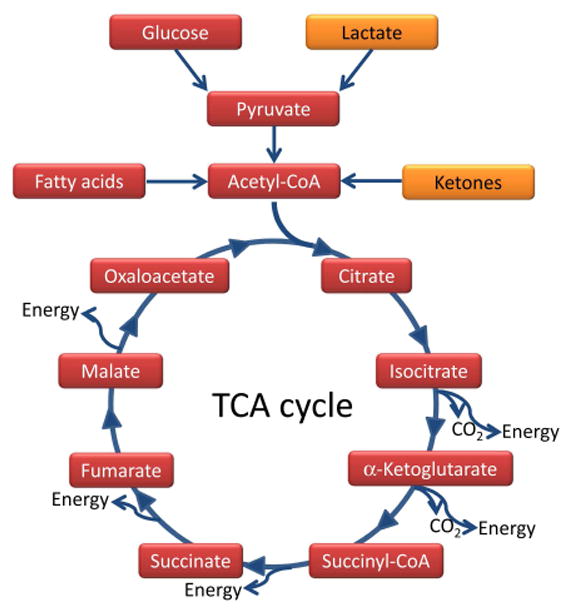Fig. 3.

Simplified version of the TCA cycle. Conventional pathways of energy utilization (shown in red) lead from glucose via glycolysis to pyruvate and acetyl-CoA, whereas fatty acid oxidation directly forms acetyl-CoA. Acetyl-CoA feeds into the TCA cycle, where it is metabolized into CO2 and leads to the production of energy equivalents at several molecular oxidation steps. Therefore, maintaining the supply of acetyl-CoA is vital for efficient mitochondrial function and energy production. Alternative metabolites (shown in orange), such as lactate can substitute for glucose and produce pyruvate, whereas ketone bodies can be metabolized into acetyl-CoA, thereby bypassing glycolysis and boosting mitochondrial TCA cycle-based bioenergetics.
